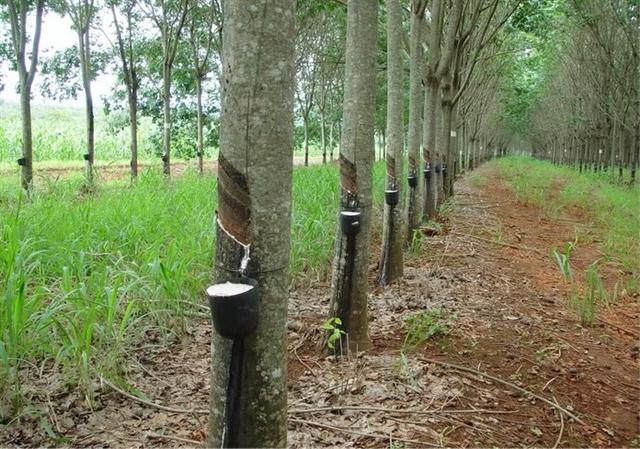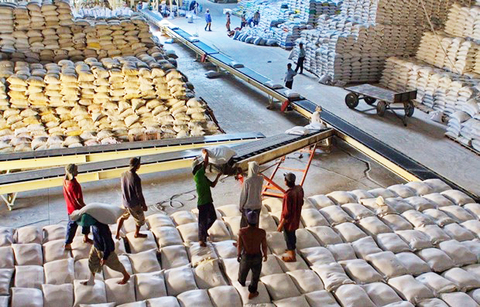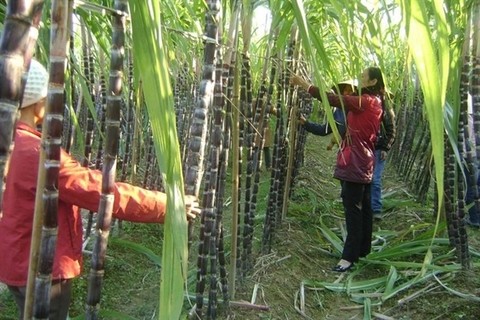Cautious approach taken for 2021 rubber ambitions
Cautious approach taken for 2021 rubber ambitions
Global rubber prices are rising again, with rubber exporters eyeing international automobile and other processing industries. Nevertheless, as the pandemic remains unpredictable, local rubber producers and exporters are remaining wary when it comes to setting this year’s profit targets.

Cautious approach taken for 2021 rubber ambitions. Source: internet
|
Rubber prices are returning to an upwards trend, and the Vietnam Rubber Group (VRG) wants to increase revenue to VND27.1 trillion ($1.17 billion) for this year, higher than the VND21.17 trillion ($1.18 billion) in 2020. But the pandemic is causing VRG to be more cautious when it comes to the proposed profit target of VND4.6 trillion ($200 million) for 2021, much lower than the VND5.23 trillion ($227 million) of 2020.
Le Thanh Hung, deputy general director of VRG, said that the group’s rubber export orders are strong, as some units have signed new contracts with customers up until the end of 2021, with some of these including orders for every month. VRG’s output in 2020 reached nearly 370,000 tonnes of rubber latex, up 10.4 per cent compared to 2019.
The hesitant approach towards this year’s goals may still be reasonable. On one hand, Vietnam is selling rubber to the global market at higher prices than before, with the average price in January standing at $1,608 per tonne, up 0.9 per cent from December and 10.3 per cent over January 2020, according to the General Department of Vietnam Customs (GDVC). However, though prices have been gradually increasing since the third quarter of last year, “most businesses have no more goods for sale,” said Vo Hoang An, general secretary of VRG. Vietnam’s rubber industry may thus not benefit much from the rising prices if the supply continues to be slow.
China, India, and South Korea remained the three largest rubber consumption markets of Vietnam in 2020, accounting for 76.8, 3.7, and 2.1 per cent of the market share, respectively. However, as the pandemic has not been completely controlled in these markets, the growth of the Vietnamese rubber industry has been directly affected.
According to statistics of the GDVC, Vietnam’s rubber exports in 2020 reached 1.75 million tonnes, worth $2.38 billion, up 2.9 per cent in volume and 3.6 per cent in value compared to 2019. The average rubber export price of Vietnam in 2020 stood around $1,360 per tonne, an increase of 0.7 per cent compared to the previous year.
Rubber exports to China in January accounted for 75.05 per cent of the total export volume of the country, reaching more than 142,000 tonnes worth $222 million, down 19.4 per cent in volume and 19.5 per cent in value compared to December 2020, according to data of the GDVC.
The Agro Processing and Market Development Authority under the Ministry of Agriculture and Rural Development has considered the possibility that China will reduce rubber imports in 2021 after gathering a large stockpile. In 2020, China imported $4.34 billion of natural and synthetic rubber, up 35.2 per cent on-year. In China, Vietnamese rubber is forced to compete with Malaysian suppliers, and the geographical advantage of Vietnamese rubber may be significantly reduced due to the advantage of Malaysia’s supply stability. Data from the Foreign Trade Agency under the Ministry of Industry and Trade showed that Malaysia’s rubber exports in December reached more than 61,000 tonnes, up 8.9 per cent compared to November and up 21.8 per cent compared to end-2019.
China is Malaysia’s largest rubber export market, accounting for 53.8 per cent of the total export volume. Meanwhile, Germany and the US account for 10.2 and 5.4 per cent, respectively.
Vietnam’s rubber exports may also face more hurdles in 2021 as the country’s market share in the US decreased slightly last year compared to 2019. According to statistics of the US International Trade Commission, in 2020, Vietnam was the 13th-largest rubber supplier with over 25,000 tonnes, worth $36.75 million, but down 21.2 per cent in volume and 15.4 per cent in value compared to 2019. In total, Vietnam’s share within the US’ rubber imports accounted for 1.59 per cent, slightly down from 1.65 per cent in 2019.
The International Rubber Study Group (IRSG), composed of rubber producing and consuming stakeholders, found that total global rubber demand in 2020 decreased by 8 per cent to 26.5 million tonnes. Demand for natural rubber decreased by 8.1 per cent to 12.5 million tonnes while demand for synthetic rubber reduced by 7.9 per cent to 14 million tonnes.
Meanwhile, global production of natural rubber went down by 5.9 per cent in 2020 due to abnormal weather, rubber tree defoliation, and the pandemic, which mostly affected production in Southeast Asian countries. In 2021, the situation of the global rubber market may change amid rising oil prices and expectations of recovering economies. The IRSG forecasts that the world’s demand for natural rubber this year will recover thanks to a higher demand for commercial vehicles, particularly in emerging markets. The demand for synthetic rubber is forecast to rise by 10.2 per cent on-year thanks to strong demand for gloves and other seasonal products. Besides that, the market may also profit from rising oil prices and a weaker US dollar.
Meanwhile, at the Osaka Dojima Commodity Exchange (ODE), the prices of rubber for the July 2021 term increased to the highest level in four years, thanks to the recovery of term prices at the Shanghai Stock Exchange.
Although the rubber market in 2021 remains very unpredictable, the increase in rubber prices is still considered good news for rubber producing countries like Vietnam.
For example, the nation’s rubber exports to the Indian market are expected to see more positive growth this year. According to the Nomura Research Institute, the Indian automobile industry is expected to recover strongly in this fiscal year after the negative impacts of the COVID-19 pandemic, which may also increase demand for Vietnamese rubber.






















